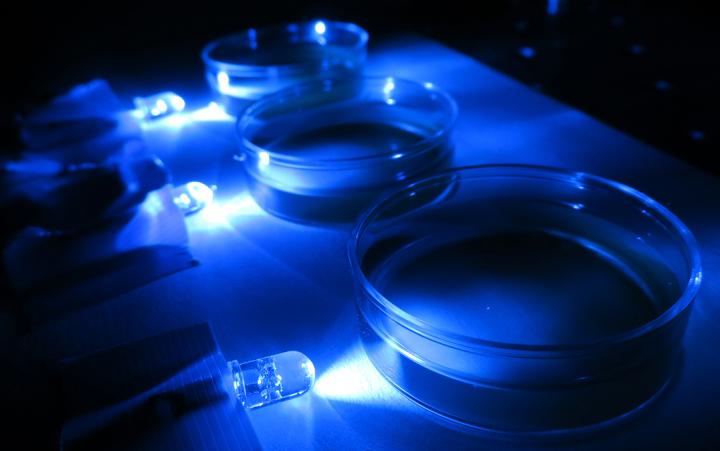Research team led by the University of Tsukuba discover new component of molecular motors that drive cellular movement in response to light

Credit: University of Tsukuba
Tsukuba, Japan – Single-celled algae and animal sperm cells are widely separated in evolution but both swim in the same way, by waving their protruding hairs, called cilia or flagella. Motion is driven by molecular motors, complex assemblies of proteins that exert a force when changing shape. The motor proteins are connected to the cell’s internal skeleton of microtubules; the moving force from the motor causes microtubules to slide, moving the flagella and propelling the cell.
Now a team led by Professor Kazuo Inaba of the University of Tsukuba in collaboration with scientists from Osaka University, Tokyo Institute of Technology and Paul Scherrer Institute has described a new protein that is closely associated with one class of motors, called dyneins. They recently published their findings in Science Advances.
The team isolated molecular motor complexes from sperm cells of a marine invertebrate, the sea squirt Ciona intestinalis. Among the components, they discovered a novel protein related to a protein with a blue-light sensing function, called BLUF. They named the new protein “DYBLUP” for dynein-associated BLUF protein. Comparing gene sequences, they found DYBLUP has been conserved during evolution across a wide range of organisms, from some fungi and algae to animals (but is not found in arthropods or higher plants).
Working with the single-celled alga Chlamydomonas, the team used powerful electron microscopy techniques to show that DYBLUP is part of the molecular tether linking the motor protein to the microtubules.
They then showed that DYBLUP is also involved in regulating the motor in response to light. Chlamydomonas cells normally swim towards dim blue light but away from bright blue light, which damages the cells. Mutant cells of the algae that lacked DYBLUP behaved like normal cells in dim blue light. Initially they avoided strong blue light, but over time they became accustomed to and were then strongly attracted towards it.
“We have discovered a new feature of molecular motors”, says Professor Inaba, corresponding author. “Not only is DYBLUP conserved widely across different species, it’s also involved in responses to light. In mutant Chlamydomonas cells without DYBLUP protein, it seems the linkage between the motor and the cell skeleton is partly broken, leading to uncontrolled beating of the flagella and altered cell behavior in blue light.”
“Both the function and evolution of DYBLUP are fascinating,” Professor Inaba continues. “Greater understanding of this protein might also open the way for new technologies to manipulate molecular motors, perhaps using light as a trigger.”
###
The article, “A dynein-associated photoreceptor protein prevents ciliary acclimation to blue light”, was recently published in Science Advances at doi.org/10.1126/sciadv.abf3621
Media Contact
Naoko Yamashina
[email protected]
Related Journal Article
http://dx.




